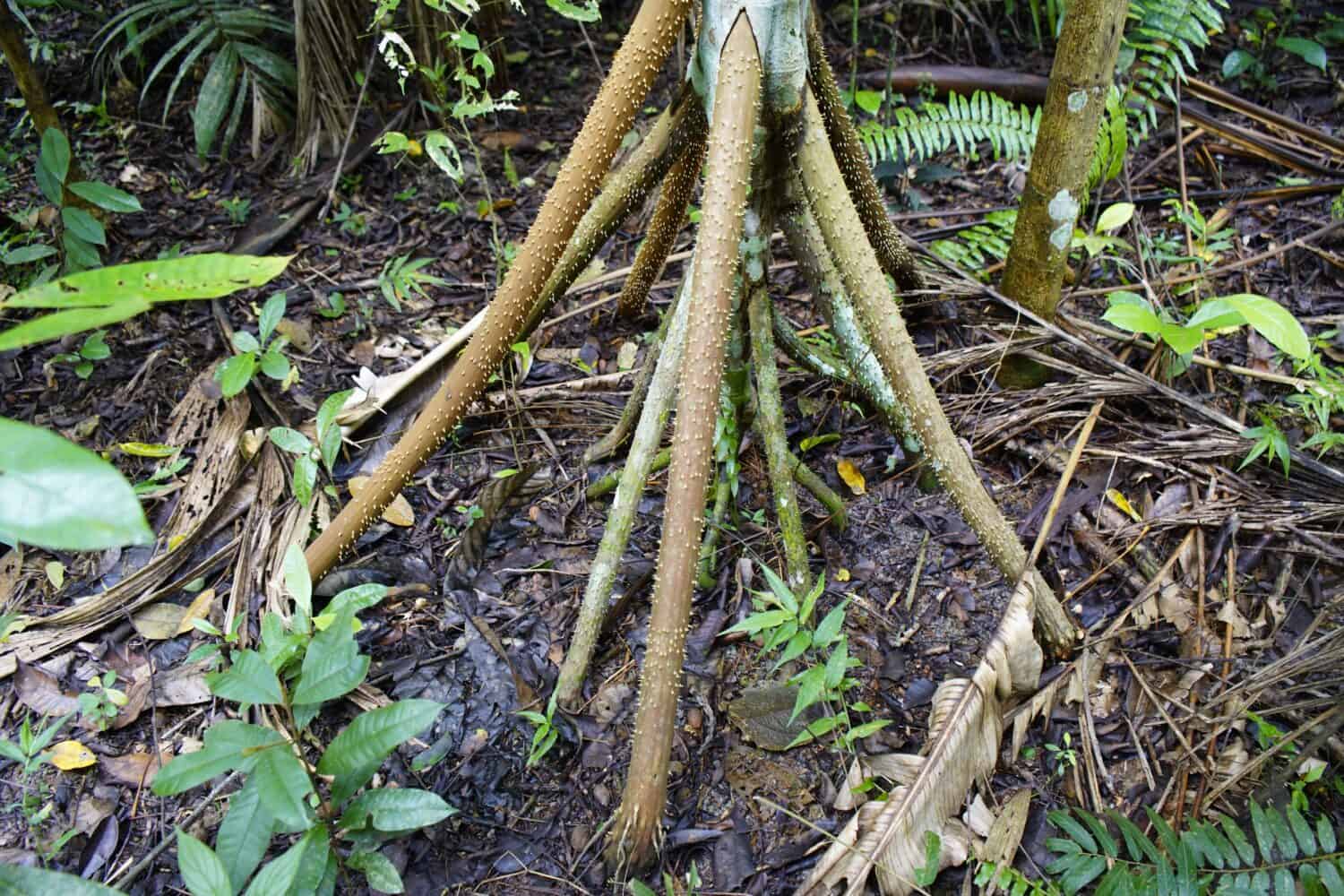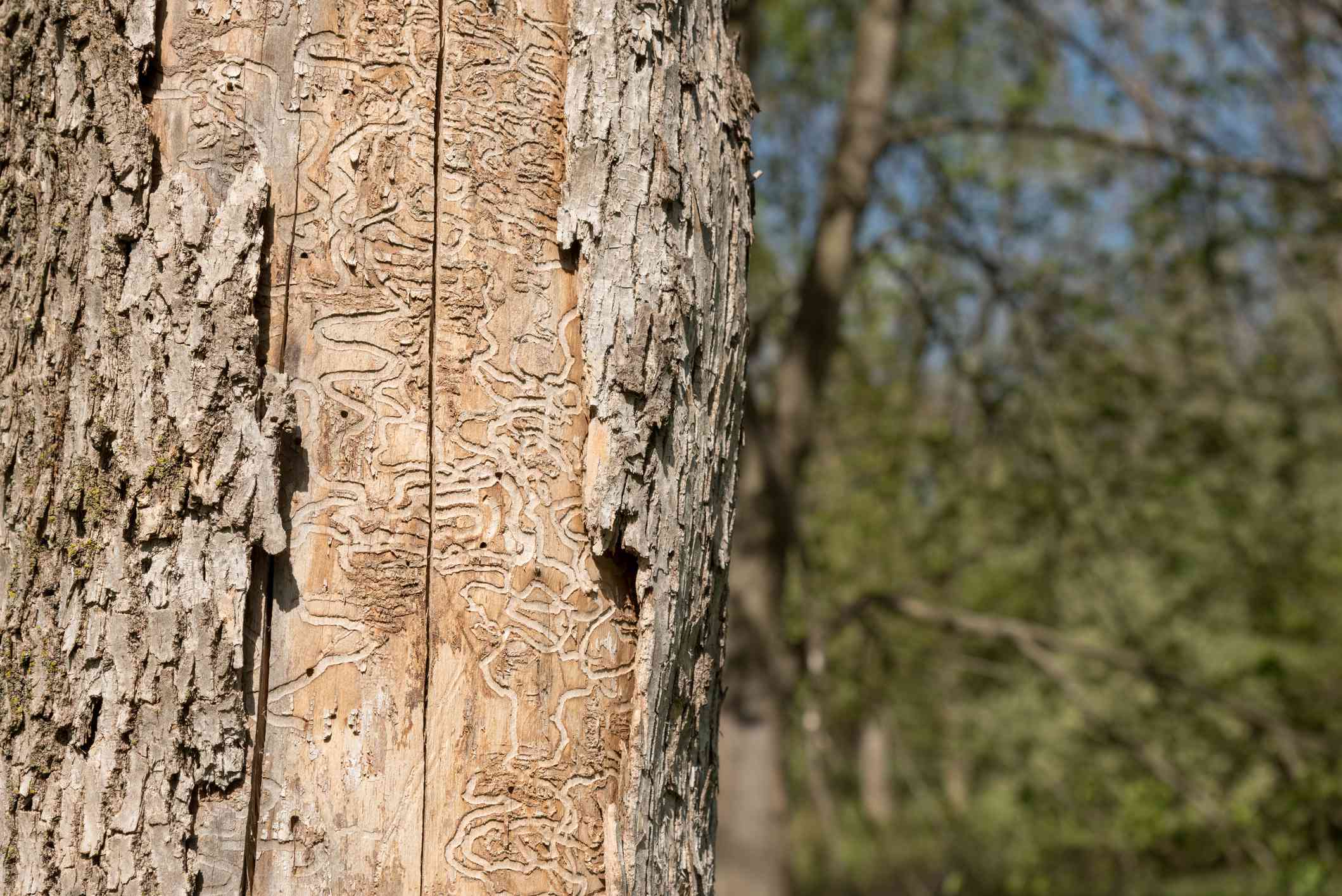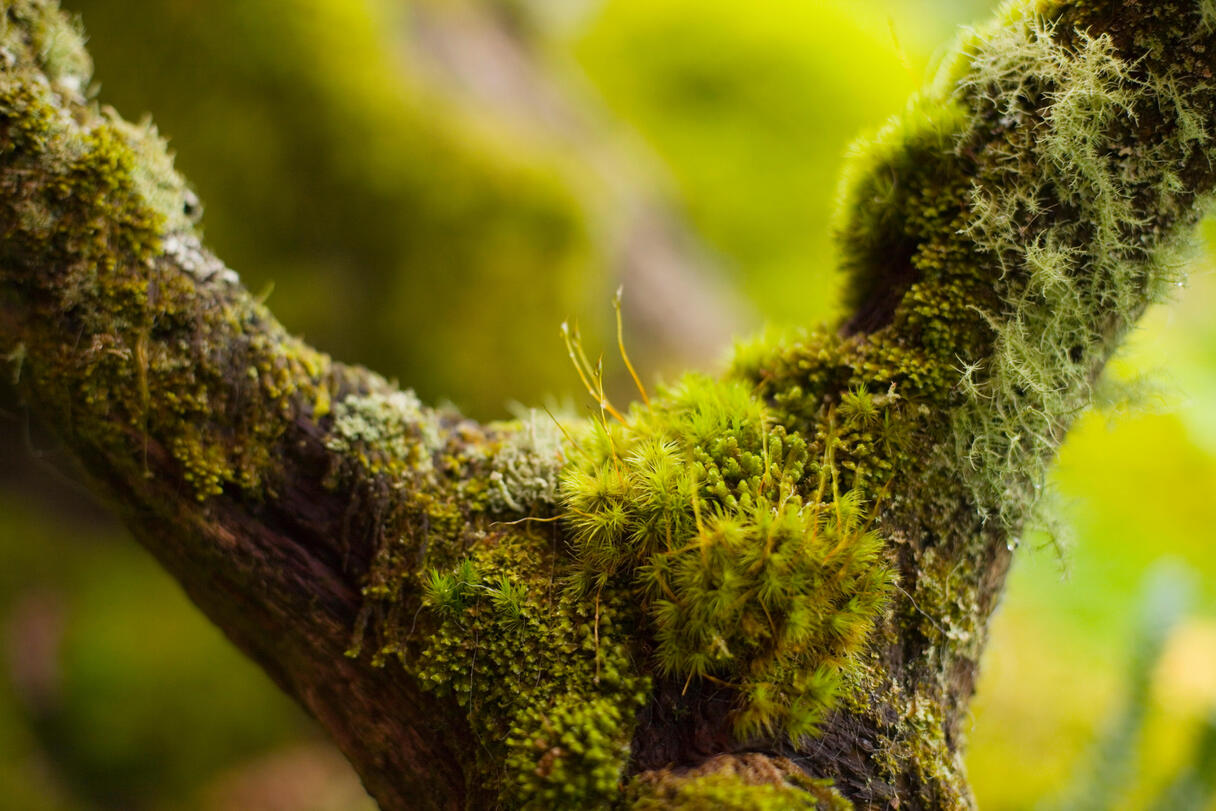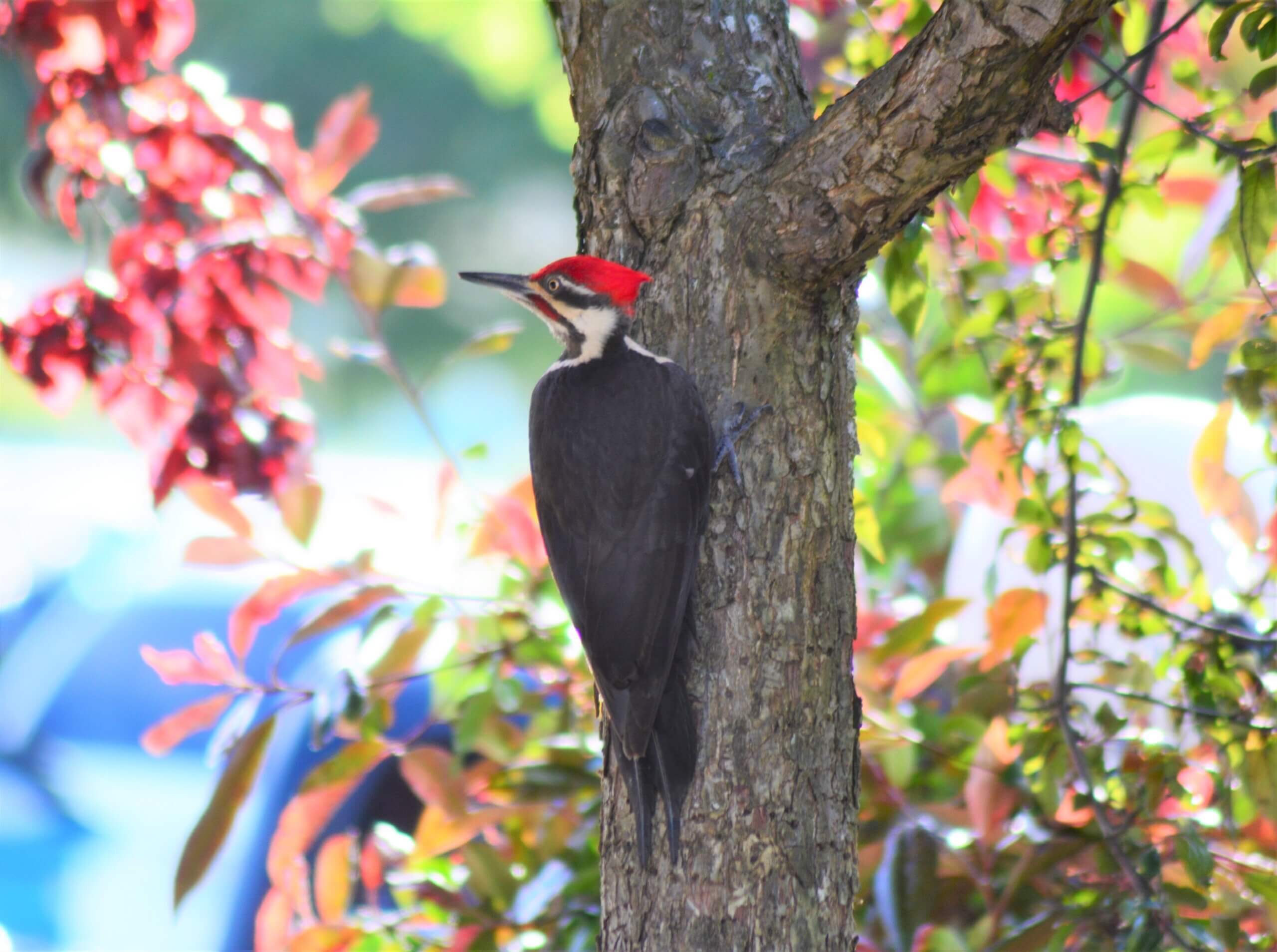Home>Gardening Tips and Tricks>Problem Solving>Why Paint Trees White
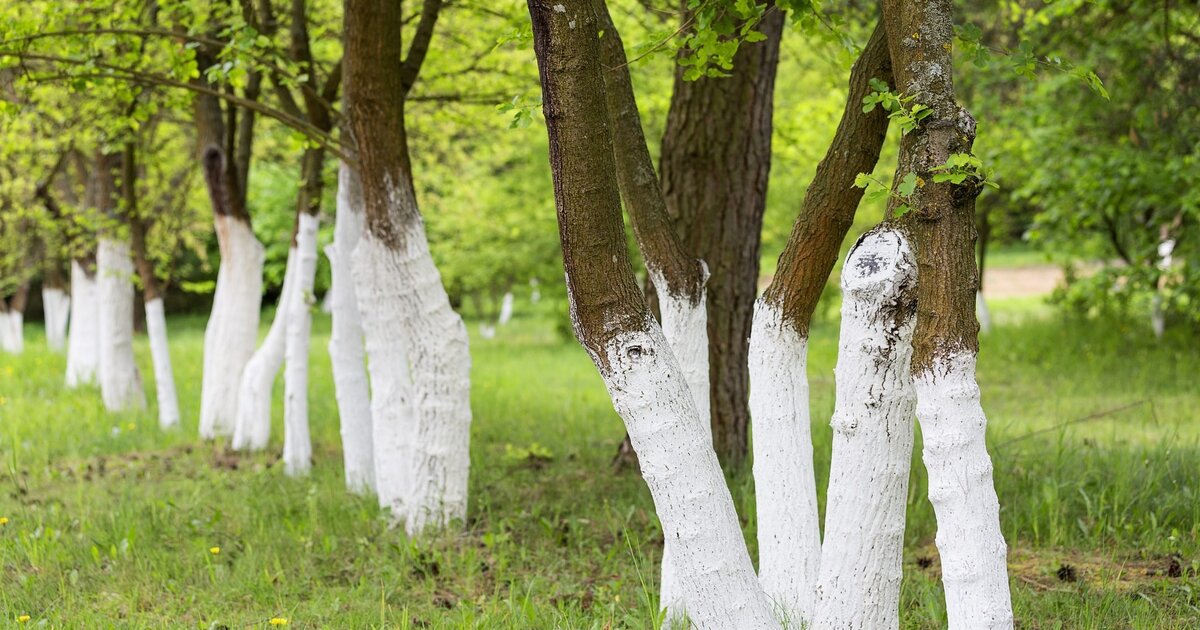

Problem Solving
Why Paint Trees White
Modified: January 22, 2024
Discover the problem-solving benefits of painting trees white. Protect your trees from pests and diseases with this easy and effective solution.
(Many of the links in this article redirect to a specific reviewed product. Your purchase of these products through affiliate links helps to generate commission for Chicagolandgardening.com, at no extra cost. Learn more)
Table of Contents
Introduction
Trees are not only beautiful and essential for the environment, but they also have a significant impact on our daily lives. They provide us with clean air, shade, and contribute to biodiversity. However, there are times when trees need a little extra care to thrive and remain healthy, and one method that has been practiced for centuries is painting trees white.
Painting trees white involves applying a lime-based or acrylic-based paint to the trunk and branches of a tree. This technique has been used for various reasons throughout history, and it continues to be employed today. In this article, we will explore the historical purpose of painting trees white, the benefits it provides, the scientific explanation behind it, as well as the environmental impact and concerns associated with this practice.
The act of painting trees white has been around for hundreds of years. It was originally done using lime wash, a mixture of lime, water, and sometimes additional ingredients such as salt. The purpose of applying lime wash to trees was primarily to protect them from pests and diseases. The paint acted as a physical barrier, preventing insects from laying eggs on the bark and discouraging fungal growth.
Over time, the use of white paint on trees expanded beyond pest control. It became a common practice in urban areas to apply white paint to the trunks of trees to protect them from sunscald and frost damage. Sunscald occurs when the temperature fluctuates drastically, causing the bark to crack and peel. By reflecting sunlight, the white paint helps to regulate the tree’s temperature and prevent sunscald. Similarly, the paint can provide insulation and protect the tree from frost during winter months.
Aside from protecting trees from environmental factors, painting trees white also has aesthetic purposes. In some cultures and landscapes, white trees create a striking visual contrast, adding an artistic element to the surroundings. Additionally, white-painted trees can improve visibility in areas with heavy traffic, making them more noticeable to drivers and reducing the risk of collisions.
As we delve deeper into the specifics of painting trees white, it is important to consider the scientific rationale behind this practice. Understanding the underlying principles will enable us to fully comprehend the benefits and potential drawbacks associated with painting trees white.
Historical Purpose of Painting Trees White
The practice of painting trees white has a long history that spans across different cultures and time periods. One of the earliest recorded instances of this technique can be found in ancient Egypt, where trees were painted white as part of religious ceremonies and rituals.
In ancient Rome, white-washed trees were a common sight along city streets. The Romans believed that the white color symbolized purity and divine protection, and they used it as a way to honor their gods. The practice continued through the Middle Ages and into the Renaissance, with white-painted trees often seen in royal gardens and estates.
During the 19th and early 20th centuries, the use of whitewash on trees gained popularity as a method of pest control. Insect infestation was a significant concern for farmers and gardeners, and painting the trunks of trees with lime wash proved to be an effective deterrent. The paint acted as a physical barrier, preventing insects from accessing the tree’s bark and laying their eggs.
Painting trees white also became common in urban areas during this time. As cities grew and industrialization took hold, pollution became a major issue. The white paint helped to mitigate the effects of pollution on trees by creating a protective layer on the bark. It acted as a shield, reducing the absorption of harmful chemicals and pollutants from the air.
Furthermore, whitewashing trees served a practical purpose in colder regions. In regions with harsh winters, the white paint helped to reflect sunlight and reduce the risk of sunscald. Sunscald occurs when the temperature fluctuates drastically, causing the bark to crack and peel. By reflecting sunlight, the white paint helps to regulate the tree’s temperature and prevent damage.
Overall, the historical purpose of painting trees white can be attributed to a combination of factors, including pest control, religious and cultural symbolism, pollution mitigation, and weather protection. It has been a versatile and widely practiced technique that has evolved over time to accommodate the specific needs of different environments and societies.
Benefits of Painting Trees White
Painting trees white offers several benefits that contribute to the health and well-being of the trees themselves, as well as their surrounding environment. Let’s explore some of the key advantages of this practice:
- Pest Control: One of the primary benefits of painting trees white is its ability to deter pests. Insects, such as borers and beetles, are less likely to infest a tree with a white-painted trunk. The paint acts as a physical barrier, making it difficult for pests to access the bark and lay their eggs. This can help prevent infestations and protect the tree from damage.
- Temperature Regulation: White paint has insulating properties that can help regulate the temperature of the tree. During hot summer months, the paint reflects sunlight, reducing the amount of heat absorbed by the bark. This can help prevent sunscald and overheating, especially in regions with high temperatures. Similarly, during cold winter months, the white paint can provide insulation and protect the tree from frost damage.
- Protection from Environmental Factors: Painted trees have an added layer of protection against various environmental factors. The white paint acts as a shield, reducing the absorption of harmful chemicals, pollutants, and UV radiation from the air. It can also protect the tree from excessive moisture and prevent waterlogging, which can lead to root rot and other diseases.
- Improved Visibility: In urban areas with dense traffic, painting trees white can enhance their visibility. This is especially important for trees located near roads or pedestrian walkways. The white color stands out against the surrounding foliage and buildings, making the trees more noticeable to drivers and pedestrians. This can help reduce the risk of accidents and improve overall safety.
- Aesthetic Appeal: Painting trees white can have an aesthetic impact on landscapes and gardens. The bright white color creates a striking contrast against the natural greenery, adding visual interest and beauty. It can also be used as a design element to highlight specific trees or create a cohesive color scheme in a garden or park.
These are just some of the benefits that painting trees white can provide. However, it is important to note that the effectiveness and relevance of this practice may differ based on the specific tree species, climate, and local conditions. Before deciding to paint trees, it is recommended to consult with arborists or tree care professionals to ensure the best course of action for the health and well-being of the trees.
Scientific Explanation Behind Painting Trees White
The scientific rationale behind painting trees white lies in the properties of light and heat reflection. When a tree is painted white, the color reflects a significant portion of the sunlight that hits its surface.
As sunlight consists of various wavelengths, including visible light and infrared radiation, the white paint reflects most of these wavelengths. This reflection helps to reduce the amount of light and heat absorbed by the tree’s bark, thus preventing overheating and potential damage that can occur during hot summer months.
White paint has a high albedo, meaning it has a high reflectivity. This high reflectivity allows the paint to bounce off a greater amount of sunlight, reducing the amount of energy transferred to the tree. In contrast, dark colors absorb more light and heat, leading to higher temperatures and an increased risk of damage.
By reflecting sunlight, the white paint on a tree’s trunk and branches helps to maintain a more consistent temperature. This is especially important in regions with extreme temperature variations, where sudden drops or rises can negatively impact the health of a tree.
Additionally, the white paint provides insulation during colder months by reducing heat loss from the tree. The reflective properties of the paint prevent excessive cooling and can help protect the tree from frost damage.
The application of white paint on trees also has an impact on the microclimate around the tree. As the paint reflects light and heat away from the tree, it decreases the temperature of the surrounding area. This can be beneficial in urban environments where heat islands are a concern. Heat islands refer to areas with significantly higher temperatures than their surroundings due to human activities and infrastructure. By painting trees white, the heat island effect can be mitigated as the reflective surfaces help to lower the local temperature.
It is important to note that the effectiveness of painting trees white can vary based on factors such as the type of paint used, the tree species, and the climate. Different paint formulations can result in variations in reflectivity and durability, which can impact the overall performance of the paint. Consulting with arborists or tree care professionals can provide valuable insight into the specific requirements of trees in a given context.
Environmental Impact and Concerns
While painting trees white offers several benefits, it is essential to consider the potential environmental impact and concerns associated with this practice.
One concern is the choice of paint used. Traditional lime-based paints are generally considered more environmentally friendly as they are derived from natural materials. However, some modern acrylic-based paints may contain chemicals that can have negative effects on the tree and the surrounding ecosystem. It is crucial to choose paints that are specifically formulated for tree painting and minimize any potential harm.
Another environmental concern is the disruption of natural processes. Trees have evolved to withstand various environmental conditions, including exposure to sunlight and fluctuations in temperature. By altering these natural processes with white paint, there is a possibility of interfering with a tree’s ability to acclimate to its environment and potentially disrupting the ecosystem that relies on that specific tree.
The application of paint can also affect the tree’s ability to exchange gases with the atmosphere. The bark of the tree plays a role in gas exchange, allowing carbon dioxide uptake and oxygen release. While painting the bark may not completely inhibit gas exchange, it is important to consider the potential impact on the tree’s overall respiration and its ability to perform this essential ecological function.
Furthermore, the use of white paint on trees may impact local wildlife. Some insects and animals depend on the bark and trunk surfaces for camouflage or as a habitat. The bright white color may disrupt these relationships and potentially affect the biodiversity in the area.
Additionally, the longevity and durability of the paint must be taken into account. Over time, weather and natural wear and tear may cause the paint to chip or peel, potentially creating environmental pollution if the paint contains harmful chemicals. Regular maintenance and monitoring of painted trees are necessary to ensure that any damage or degradation is addressed promptly.
It is important to consider these concerns and weigh them against the benefits before deciding to paint trees white. In some cases, alternative methods of tree care and protection may be more environmentally sustainable and have fewer potential risks.
Overall, an environmentally conscious approach is essential when using white paint on trees. Careful consideration of the paint used, potential ecological impacts, and regular maintenance can help minimize environmental harm and promote the health of both trees and their surrounding ecosystems.
Alternatives to Painting Trees White
While painting trees white has its benefits, there are alternative methods that can provide similar advantages without the use of paint. These methods focus on maintaining the health and well-being of trees while minimizing potential environmental concerns. Here are some alternatives to consider:
- Tree Wraps: Applying tree wraps or tree guards around the trunk can provide protection from pests, sunscald, and other environmental factors. Tree wraps are made of materials like burlap, cardboard, or specialized tree wrap fabric. They act as a physical barrier, shielding the bark from insects and extreme weather conditions.
- Mulching: Applying a layer of organic mulch around the base of the tree can help regulate soil temperature, retain moisture, and provide a protective layer for the roots. Mulch also suppresses weed growth, reducing competition for nutrients and water. Avoid piling mulch directly against the trunk as it can create a favorable environment for pests and diseases.
- Pruning and Trimming: Proper pruning and trimming can promote airflow and light penetration through the tree, reducing the risk of disease and pest infestation. Removing dead or damaged branches can also prevent the spread of diseases and improve the tree’s overall health and appearance.
- Tree Care and Maintenance: Regular tree care practices like proper watering, fertilization, and soil management can go a long way in maintaining tree health. These practices help ensure that trees receive adequate nutrients, water, and air circulation, allowing them to withstand environmental stressors and resist damage from pests and diseases.
- Species Selection: Choosing tree species that are well-suited to the local climate and soil conditions can greatly reduce the need for additional protection. Selecting native or adaptive species that are naturally resilient to local pests, diseases, and weather conditions can minimize the risk of damage and promote successful tree growth.
When determining the most suitable alternative to painting trees white, it is important to consider the specific needs of the trees, local environmental conditions, and the available resources. Consulting with arborists or tree care professionals can provide valuable guidance and ensure the best course of action for tree preservation and maintenance.
Conclusion
Painting trees white is a practice that has been used for centuries to protect and enhance the health of trees. It offers several benefits such as pest control, temperature regulation, environmental protection, improved visibility, and aesthetic appeal. However, it is important to consider the potential environmental impact and concerns associated with this practice.
While painting trees white can be effective, there are alternative methods available that can provide similar benefits without the use of paint. These alternatives include tree wraps, mulching, pruning and trimming, proper tree care and maintenance, and thoughtful species selection.
Before deciding to paint trees white or implement alternative methods, it is crucial to consider the specific needs of the trees, local environmental conditions, and the potential risks and benefits of each approach. Consulting with arborists or tree care professionals can provide expert advice and guidance to ensure the best course of action for tree preservation and maintenance.
Ultimately, the goal is to nurture and protect trees, recognizing their vital role in the environment and our daily lives. By implementing appropriate tree care practices and considering alternative methods, we can promote the health and longevity of trees while minimizing potential environmental harm.

